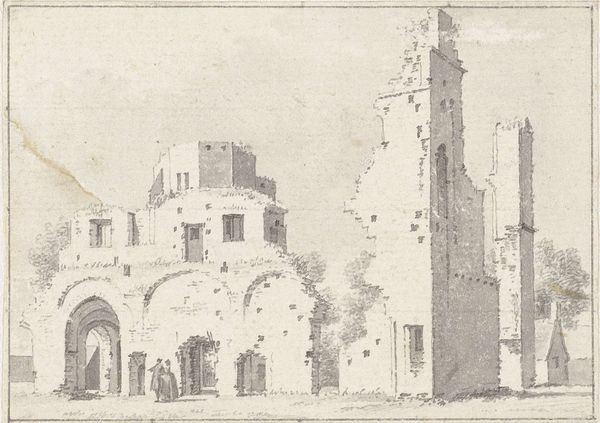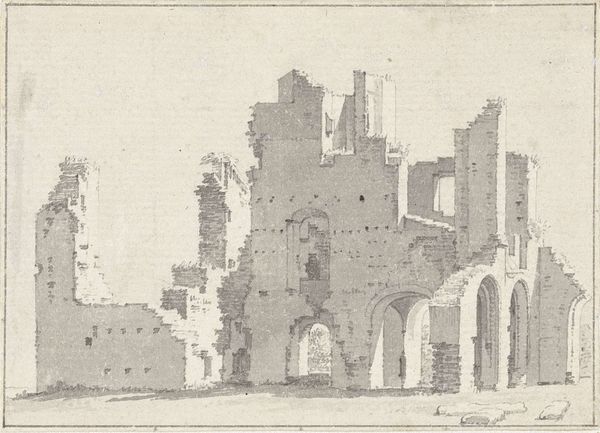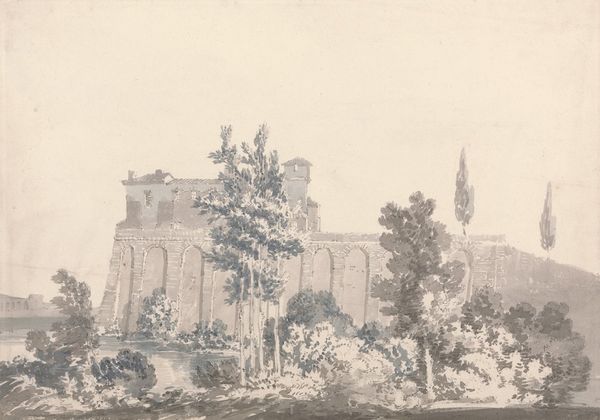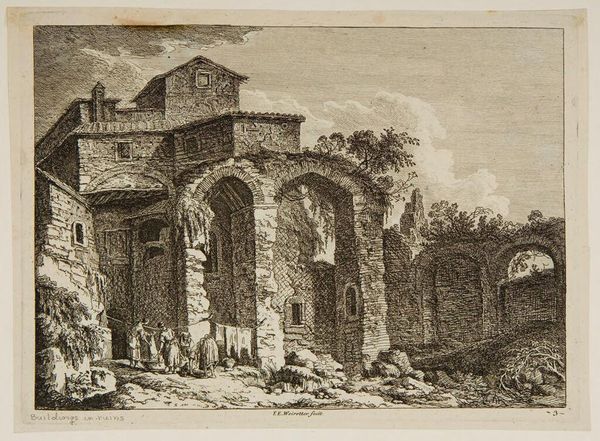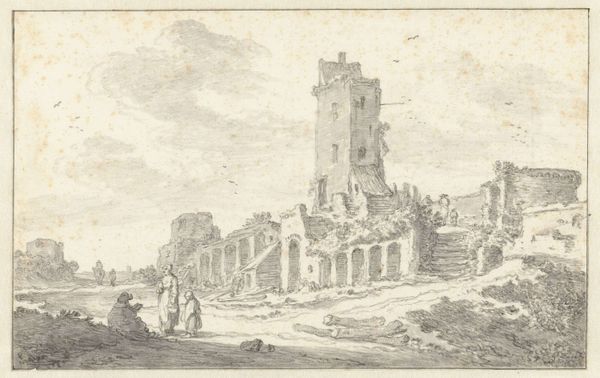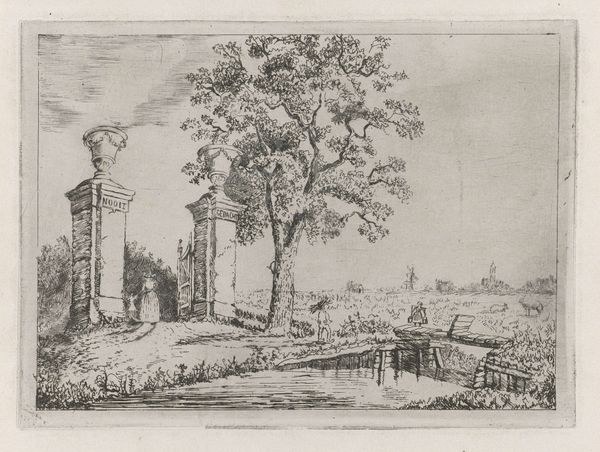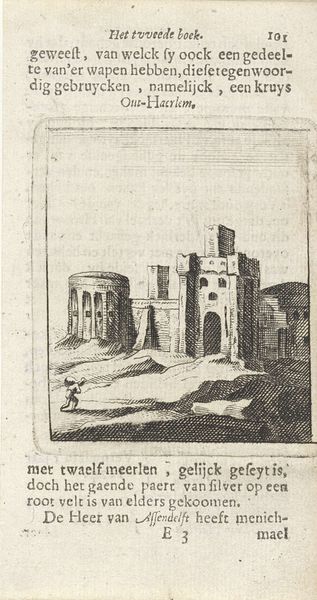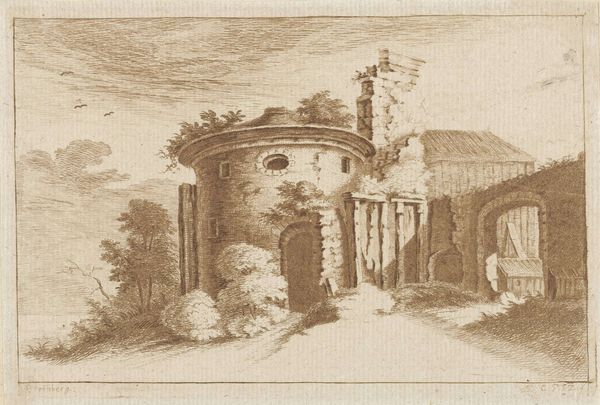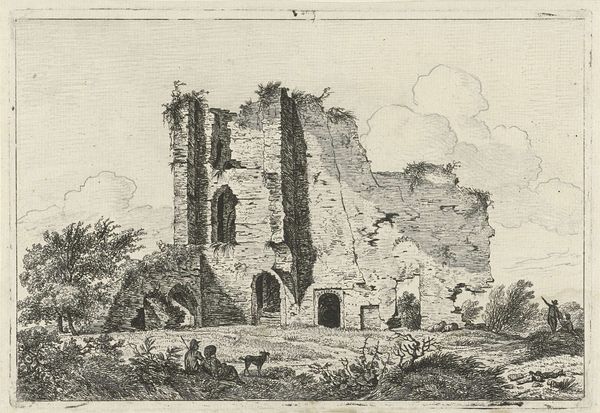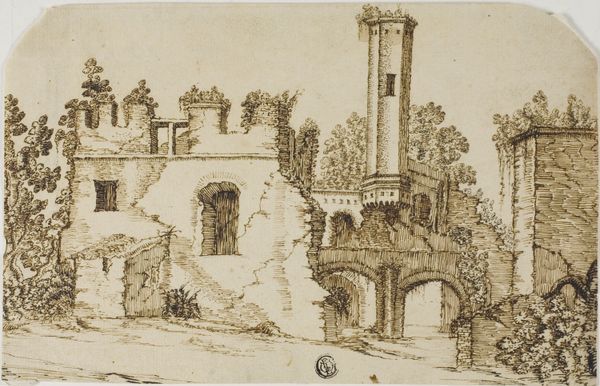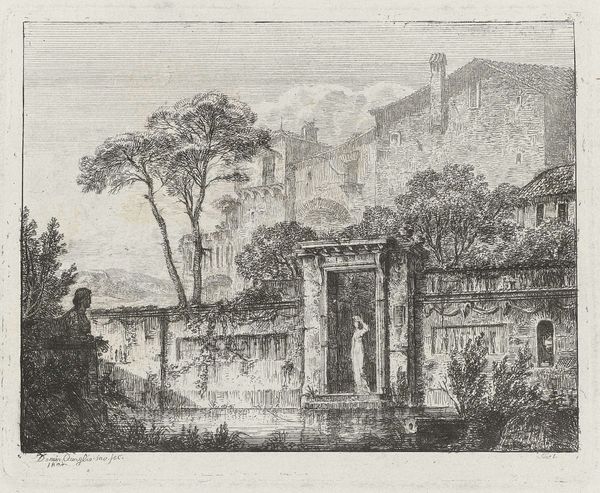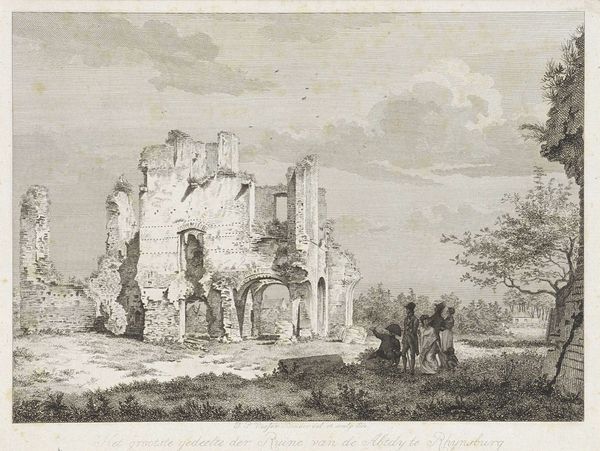
drawing, paper, ink, architecture
#
drawing
#
landscape
#
charcoal drawing
#
paper
#
ink
#
coloured pencil
#
romanticism
#
cityscape
#
watercolor
#
architecture
#
realism
Dimensions: height 108 mm, width 165 mm
Copyright: Rijks Museum: Open Domain
Curator: Oh, this whispers tales of history, doesn't it? I feel like I can almost smell the dust of ages. Editor: Quite right. We're looking at "Italiaanse ruïne," or "Italian Ruin," a work attributed to Johannes Petrus van Horstok, probably created sometime between 1755 and 1825. It's rendered in ink, charcoal and colored pencil on paper—a skillful blend. Curator: Skillful indeed! The architectural ruins… It’s romantic but also strangely stark. The contrast between the decaying stone and what looks like a farmhouse suggests a narrative, a sort of melancholic commentary on time's relentless march. Editor: Precisely. The sepia tones unify the scene and guide our eyes to explore its linear structure: The fallen architecture to the left in dialogue with that curious little structure. What semiotic content, might we assume, it yields to the work, to our engagement with this work! Curator: Semi-otic- schmee-otic! I reckon there’s real emotion buried beneath those sepia washes. It’s the past colliding with the present, the grand ideals of the Roman Empire humbled, perhaps, by the simplicity of everyday life. Isn't that what makes it truly affecting? That sense of loss? Editor: Undoubtedly. There's an affective resonance. Notice how Van Horstok juxtaposes the grandeur of the remaining structure, a grand and tall tower of what likely used to be a noble palace of Roman construction— next to the small and humble architecture beside it. A farmer's stable no less! And furthermore! It isn't simply the crumbling remains of some majestic past or simple stable life. This drawing represents the meeting of the noble and the vulgar, no less. Curator: That collision… it resonates still. Seeing this piece is a visceral, human experience; that even in ruin, there's still life, that nature always reclaims its own. This isn't just about history; it's about our own fleeting existence, you know? It is simply us! Editor: Agreed, Van Horstok seems to be invoking cyclical concepts of architectural morphology to present to us: to construct—then deconstruct... it's the universal tale. Curator: In conclusion? It speaks to something fundamentally true and lasting. I could look at this forever. Editor: And discern some ever more nuance with each passing epoch, doubtlessly!
Comments
No comments
Be the first to comment and join the conversation on the ultimate creative platform.
